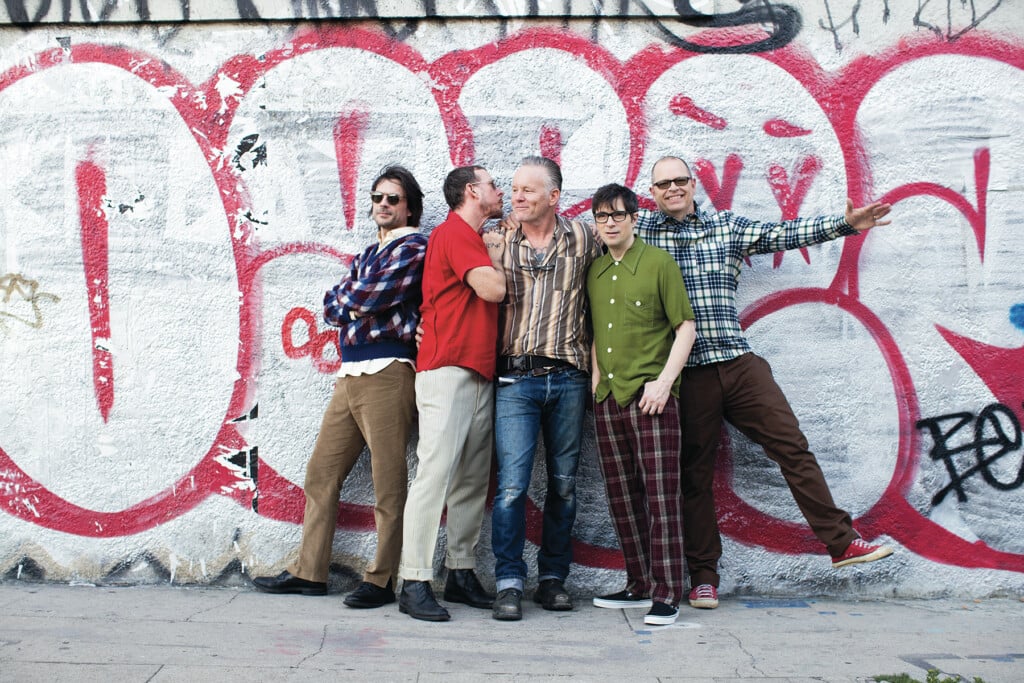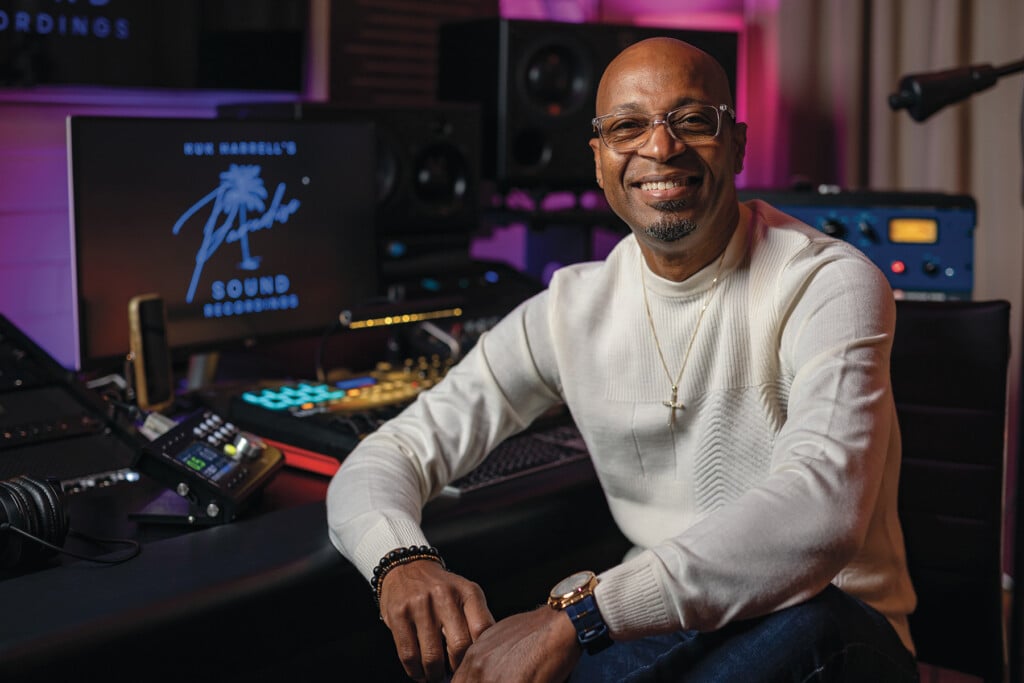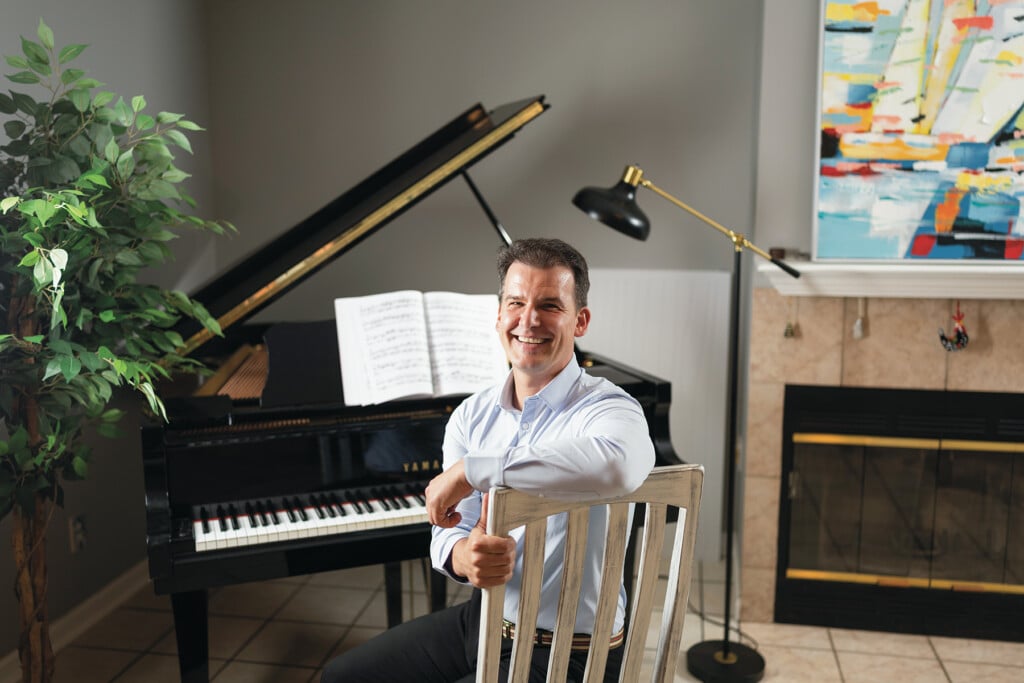Weezer in Chronology
Emerald Coast local Sean Murphy celebrates 25 years of shooting American rock band Weezer

Sean Murphy spent much of his photography career in the thick of alternative and punk rock action.
Throughout the late ’90s and early 2000s, he shot an innumerable number of bands, many of them big names—Jimmy Eat World, Everclear, Tenacious D, Blink-182, Green Day. Over the course of his career, he says he’s shot hundreds.
But the subject he’s captured the most over the years is his good friend, Weezer.
Murphy’s first photo shoot ever with rock band Weezer—known for hits like “Buddy Holly,” “My Name Is Jonas,” and “Island in the Sun”—was in 2000 for Alternative Press Magazine. Murphy has since shot the band for seven albums and countless magazine and promo shoots.
“Alternative Press was the catalyst, really for my journey in the music scene,” Murphy says. “And they’re responsible for introducing me to Weezer.”
Now celebrating 25 years of photographing Weezer, Murphy is releasing a coffee table book titled My Friend, Weezer, coming out this November.
The book, which he’s been working on for three years, is personal for Murphy, like a photo album or scrapbook of his history with the band, whose members he’s grown attached to over the years.
“I cherish them as friends,” Murphy says. “That’s more important. I didn’t do this as a business moneymaking thing for me. … It’s a big chapter of most, half of my life with this band. And I felt like it deserved that, to have something made of it.”
But then it’s also personal for the fans, as they get to see perspectives that they have never before experienced. Rather than compiling an anthology of what’s already been, Murphy wanted to present fans with what almost was.

Cover design is by Karl Koch and Skye Bailey. All the artwork in the book is done by Leia Bell, Book design done by Skye Bailey, Publisher is Page and Vine
“It’d be cooler to not show the actual album cover but show a version of the album cover or maybe a different frame or behind the scenes,” Murphy says.
The best way Murphy could conceptualize his vision was with a timeline—Weezer in chronology. He set up 4-by-8-foot boards throughout his Fort Walton Beach studio and printed 4-by-6-inch copies of every photo. Then he set to work.
“First, the Mikey Era, I would put those shoots up,” Murphy says. “And then Make Believe, those shoots. Red Album through to White Album, and all the way until the end. And all the options were there. And then I would kind of look at it for a month, a couple, three months. It took my whole studio up. And then I would whittle it down a little bit.”
Murphy then tapped into some industry friends for advice.
One of his first calls was to friend Ahmet Zappa—musician, writer, actor, and son of the late, great Frank Zappa. Zappa suggested he interview Murphy for the project.
“He’s a great interviewer,” Murphy says. “He’s known me for a long time, and he’s really funny, so he could get things out of me.”
Those interviews became the narrative surrounding the book’s imagery.
Murphy recruited designer Skye Bailey, who he’d worked with on projects for paddleboard brand Bote.
“She knows my aesthetic,” Murphy says. “She’s a fan of music. She gets it. She’s edgy in all the right ways.”

Cover design is by Karl Koch and Skye Bailey. All the artwork in the book is done by Leia Bell, Book design done by Skye Bailey, Publisher is Page and Vine
Bailey formatted the imagery with a focus on photography as an artistry, including full pages of frames and negatives. She also created a signature font from Murphy’s own handwriting, which she used throughout the book for pull quotes.
Looking to add a little more Weezer character, Murphy recruited artist Leia Bell, bandmember Brian Bell’s sister.
“She’s a really good designer,” Murphy says. “She’s quirky in all the right ways.”
Murphy suggested some doodle-style artistry on and around the images and gave her free reign. What sister doesn’t want to doodle on pictures of her brother and his friends?
“To me, that’s almost cooler than the pictures,” Murphy says. “I think it’s just rad. And she supports the writing.”
Exclusive behind-the-scenes images throughout show Murphy directing shoots. Those exist thanks to longtime Weezer righthand man Karl Koch.
“He was with the band before they were a band,” Murphy says. “He helped them with all of their fliers, merch, and designing things for them and was with them since the beginning.”
Koch brought back the original Weezer logo from 1992 that he’d designed, a tall serif-style font with loopy Es and stars on either side of the band name. The OG logo revamp was used on the cover, and Koch’s flier design was used in the intro pages of the book, ahead of Koch’s foreword.
“He writes this thing about meeting me and my work with Weezer, and it made me cry; it was so cool,” Murphy says. “And he tells these specific stories about shoots that he was on with me and his experience with me and kind of my wildness and how I was on set.”
Murphy calls the project a legacy book. But he’s not done yet, and neither is Weezer.
“This isn’t the end,” he says. “This is just a period of time. And I’m sure there will be many more shoots.”
Murphy in the Music Scene
Sean Murphy grew up here on the Emerald Coast. But years before shooting Weezer for the first time, before becoming an industry staple, Murphy began his career at New England School of Photography in Boston. “When I was in school, I wanted to be a music photographer,” Murphy says, citing inspiration from industry role models like Annie Leibovitz. “When I was starting out, I would look at her. She would shoot musicians, like character studies of the band.” Murphy admired that Leibovitz pushed the boundary. He moved to San Francisco and got into shooting musicians for Surface Magazine, where he got to shoot a personal favorite, German punk rock godmother Nina Hagen in 1995. He also shot Peter Murphy from Bauhaus and English pop-rock band Tears for Fears for Surface Magazine, the latter is the first shoot that took him to Los Angeles, which led to his work with Alternative Press and Weezer. “I would shoot somebody for that magazine, and then we became friends or maybe their management would meet me on the shoot, and they would go, ‘Oh, you’d be perfect for doing their album cover.’ It just kind of worked like that for a long time until my name became more of a household name in Los Angeles where everybody kind of knew who I was.” So it went with Weezer.


